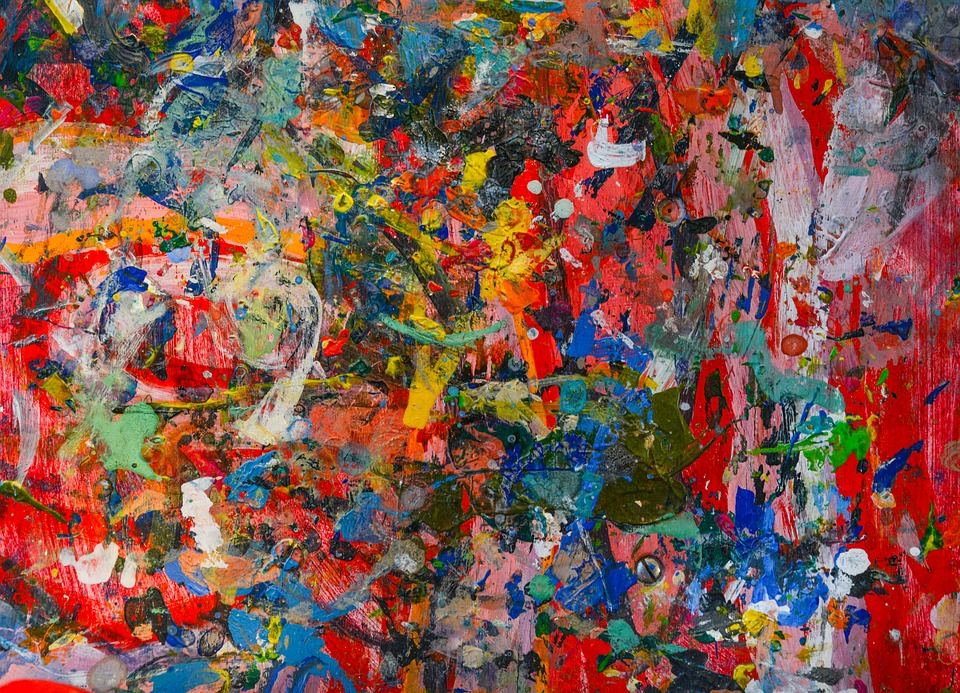
Have you ever stood in front of a painting, daunted by its visual power and yet absolutely bewildered with regards to its meaning? Is it a giant snowy mountain shining brightly under the sunlight or is it an intimidating volcano bursting through the sky? Is it even supposed to be anything? If questions like these have ever crossed your mind while viewing a work, you are just in the right place!
Yes we are talking about Abstract Art.
You may like abstract art outright, hate it or not understand exactly what it is, but since you’ve started reading this, I can at least assume you’re curious about this perplexing art form that evades definition and artistic classification.
Abstract art has been around for well over 100 years—some might even assert that abstraction started with the infamous abstract idea of an eight-legged bison found in cave paintings thousands of years ago—and has held its own against changing art movements, manifestos and testimonials to its demise through all these years. I believe
People often misunderstand abstract art because they are looking for something real and concrete with which they can identify. It is natural to try to name and make sense of what we experience and perceive in the world, so pure abstract art, with its unrecognizable subject matter and unpredictable shapes, colors, and lines can prove challenging. Many people see no difference between the art of a professional abstract painter and the art of a toddler, making it that much harder to find meaning in it.
Abstraction finds its roots in ‘intuition’ (of the artist) and ‘freedom’ (for the artist as well as for the viewer). It is the capability of the artist to use his imagination to look beyond what we can physically see and translate intangible emotions onto the canvas. It is also the ability of the audience to then try to connect to the artist’s intention and free their own mind of visual restrictions. Historically, the abstract art movement emerged in the nineteenth century as a reaction to academic painting or realism. In fact, a very simple way to understand the essence of abstract art is to think of it as a visual opposite of realistic art. While realism pays attention to every tiny fold or wrinkle, abstraction gives the artist the freedom to trust his or her intuition to create art that is equally worthy of an audience.
Mondrian himself said: "The emotion of beauty is always obscured by the appearance of the object. Therefore the object must be eliminated from the picture."
As human beings, solving problems comes naturally to us. While this can be quite useful in most situations, in the case of the world of abstract art it is not going to come in handy at all.
The most important thing to understand about abstract art is that it does NOT have to have a meaning, narrative or even a singular explanation. The main purpose of abstraction is not to tell a story but to encourage involvement and imagination. This art form primarily focuses on providing its viewers with an intangible and emotional experience – more often than not, completely different for every individual depending on their personality and state of mind. Therefore, it is really up to the viewer himself to decide whether the painting in front of him has any meaning or provokes any emotion. Like we said, abstract art is all about freedom.
“Abstraction allows man to see with his mind what he cannot see physically with his eyes.”- Arshile Gorky
It is best to see abstract art in person to truly get the full effect. This will help you immeasurably with understanding abstract art. You can't get the full impact of a piece of art from a small photo in a book or pixelated image online. In person, you can see up close the texture, size, stroke of the paintbrush, shine or matte of the surface. You can feel the strength of the painting from across the room. You can stand in the space the artist once occupied, and try to imagine his or her thoughts upon each stroke of the brush.
Understanding abstract art requires an inventiveness that invites you to discover for yourself the meaning behind the work. It is not easy to grasp, like still lifes, portraits, or other form of representational art, because it is open to interpretation in a way that representational art is not.

ArtVista Born out of genuine interest and passion, artvista developer's interest and awareness in vivid facts of art like paintings, sculptures mural, ceramic art, wall painting, photographs, Art gifts and so on amongst the present art conscious fraternity.
With our focus on long term association and the consequent collaborative actions we believe that we can work together to nurture talented artists and promote Indian Pure art globally. This enables us to work with partners towards positive results and outcome in association with one artist and the relatively of art buyers and collections Art Vista creates a great opportunity for artist to exhibit their works to thousands of viewers-both on-line and off- line.